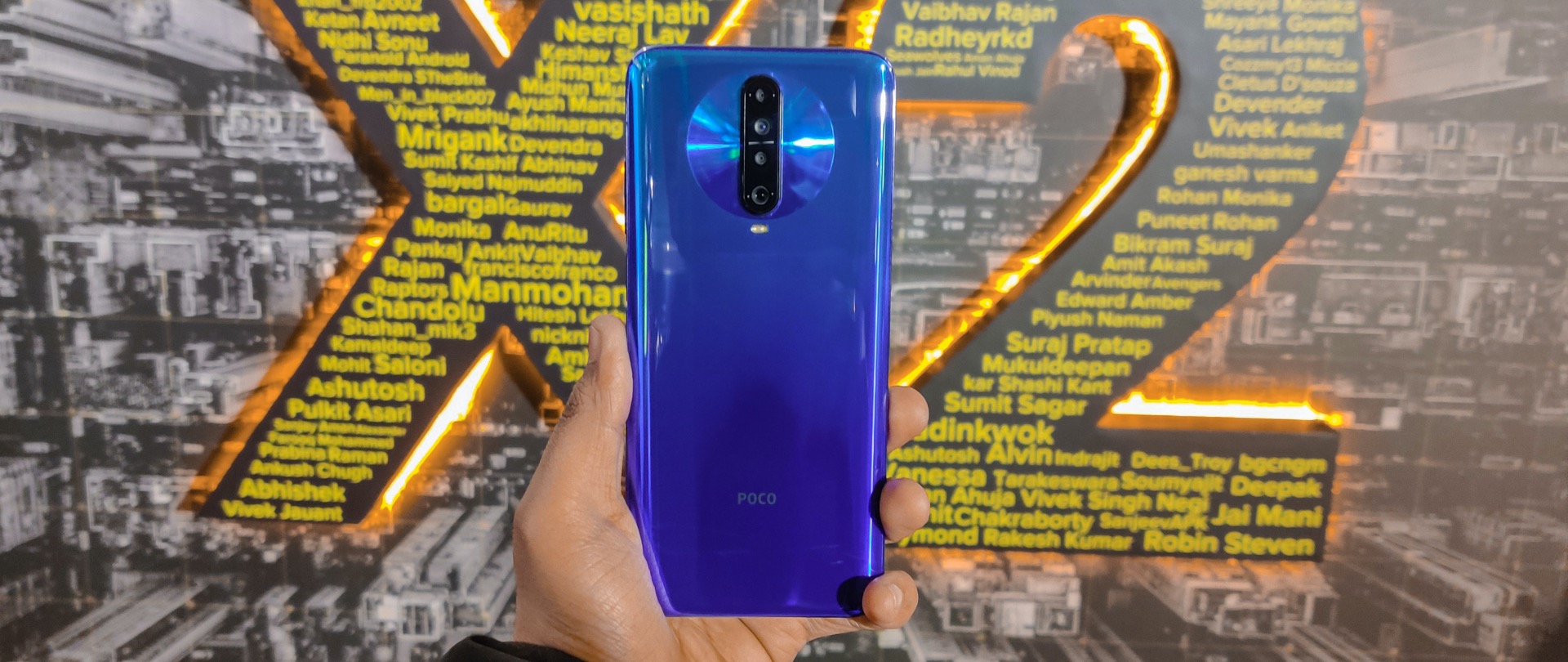Why you can trust TechRadar
Cameras
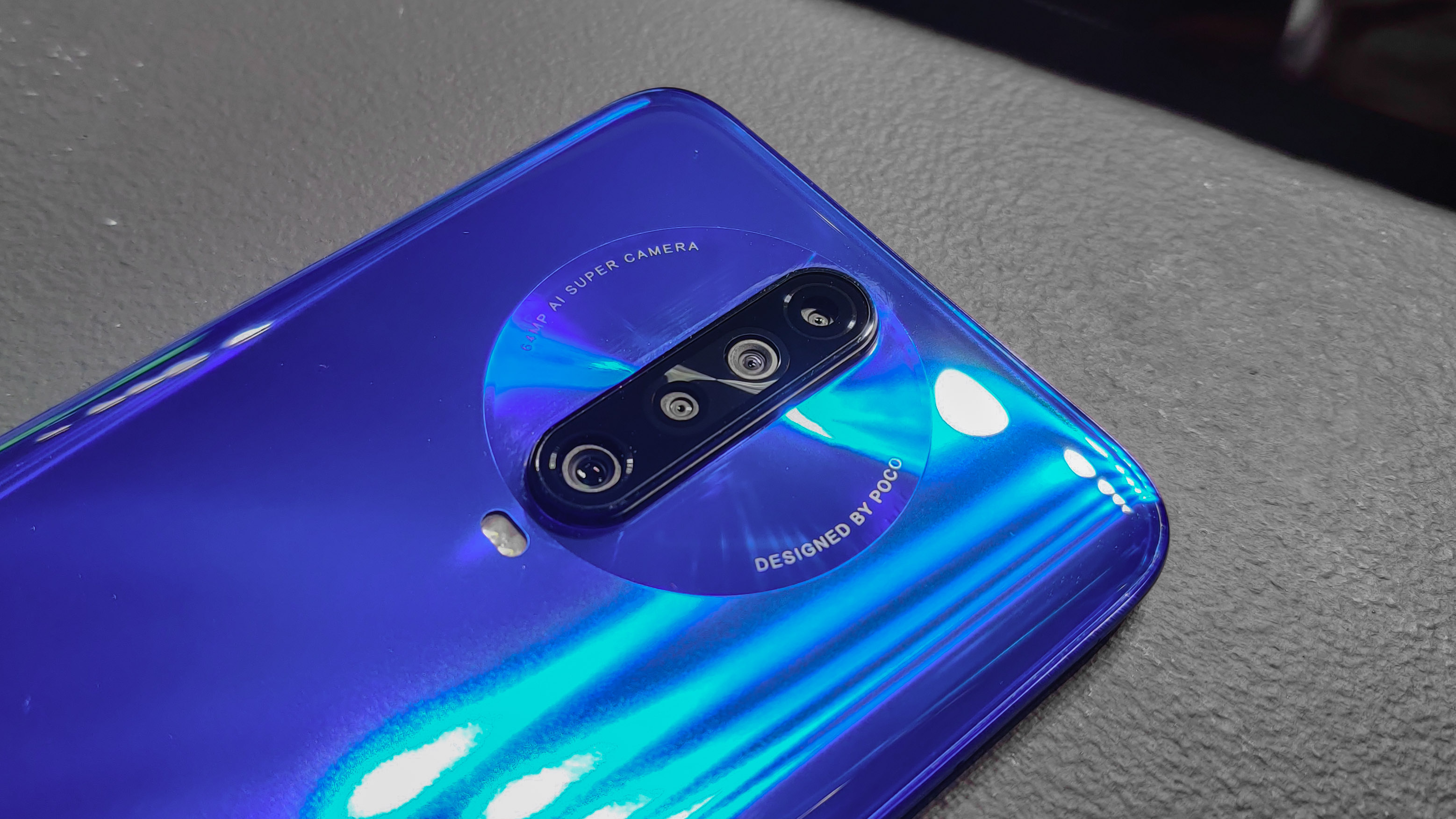
Poco X2 has a 64MP quad-camera setup that uses Sony IMX686 sensor for the primary camera with f/1.89 aperture and PDAF support. This is followed by an 8MP ultra-wide lens with a 120-degree field-of-view, a 2MP macro camera with a minimum focusing distance of 2 centimeters and a 2MP depth sensor.
The phone has dual in-screen cameras on the front, a 20MP primary camera supported by a 2MP depth camera for selfies and face recognition.
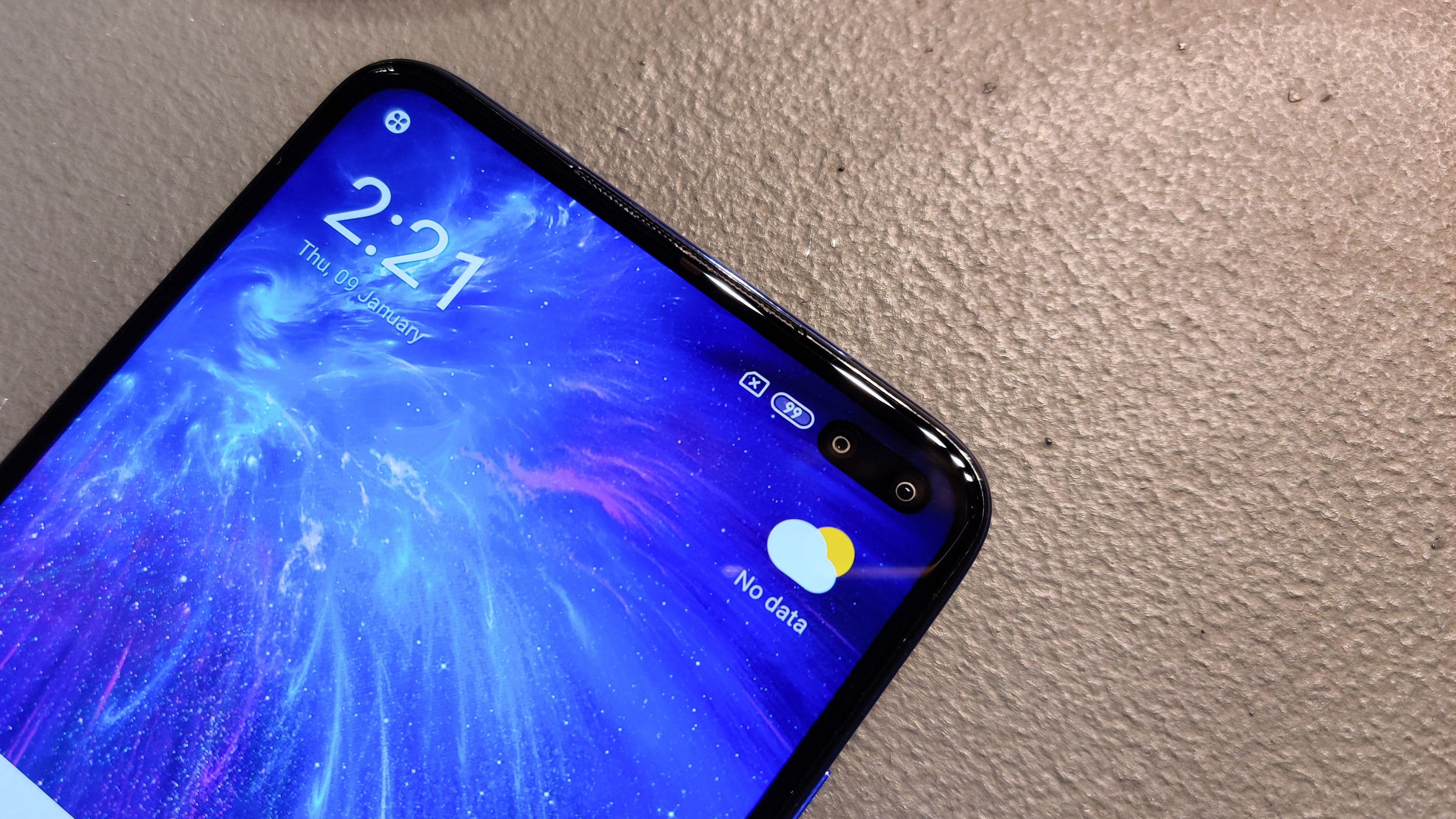
The X2’s camera system can record at 4K and slow-motion videos at 960fps with Electronic Image Stabilization (EIS) support. It also supports RAW image capture and has a VLOG mode with seven different styles. This mode essentially allows users to create a video with all the post-processing done by the phone automatically.
Poco X2 is the first phone in India to feature Sony IMX686 sensor as Xiaomi has earlier used Samsung’s ISOCELL GW1 64MP sensor on the Redmi Note 8 Pro, it’s first 64MP camera phone.
After a thorough use we believe for its asking price, the Poco X2 performs more than adequately, producing pictures with a good dynamic range, close to natural colours, decent clarity with minimal noise except at night. In daylight, the camera system works just fine with ample clarity but as the light goes away in the evening, you can see more grains in the pictures.
However, there’s a night mode to support you through low-lit conditions and it produces a better, sharp imagery of the scene as opposed to the normal shooting mode. The primary 64MP camera creates 16MP images by default courtesy of pixel-binning, however, there’s a separate 64MP toggle for capturing high-resolution frames.
While the Poco X2 skips on a telephoto lens in lieu of a macro sensor, you can still zoom upto 2x digitally, that is. The ultrawide-angle lens works decently in well-lit conditions and it’s better optimized to account for the barrel distortion that is common with this particular camera mode.
The macro lens gives you a slightly different and closer perspective of objects. Give it some time as there is a learning curve and it will come in handy if you know how to compose a frame. This goes without saying, but the macro lens works brilliantly in daylight as opposed to night and also make sure not to go in too close to your subject as it can cast a shadow.
The depth sensor assists in portrait mode to provide a natural-looking bokeh effect behind the person in the frame. The camera can identify edges easily, however, it needs to be optimized further in order to better detect edges and separate object in focus with the background. The app allows you to manually choose an aperture to create a picture with depth and it works well most of the time.
You can record up to 4K at 30fps on the Poco X2 and the videos shot from it were quite good with great detailing for the price. The gyroscope-based stabilization works well, however, it doesn’t come as close as the stability offered by OIS.
Then again, for its asking price, the Poco X2 has a well-rounded set of cameras that makes this phone a joy to use. We especially enjoyed using the VLOG mode apart from the different sets of lenses (macro and ultra-wide), however, it would’ve been nice to see a telephoto lens on this phone.
Performance

Poco X2 is powered by Qualcomm Snapdragon 730G chipset paired with an octa-core CPU and Adreno 618 GPU. This is a gaming-centric processor by Qualcomm as it brings some Snapdragon Elite gaming features to the table. The chip renders graphics 15% faster than the previous generation, supports True HDR gaming and cinematic quality processing.
The phone is fitted with LiquidCool technology that is responsible for dissipating heat 300% faster than smartphones without such a solution.
The phone comes in three different RAM and UFS 2.1 storage options-- 6GB/64GB, 6GB/128GB and 8GB/256GB, with an option to increase the storage via microSD card.
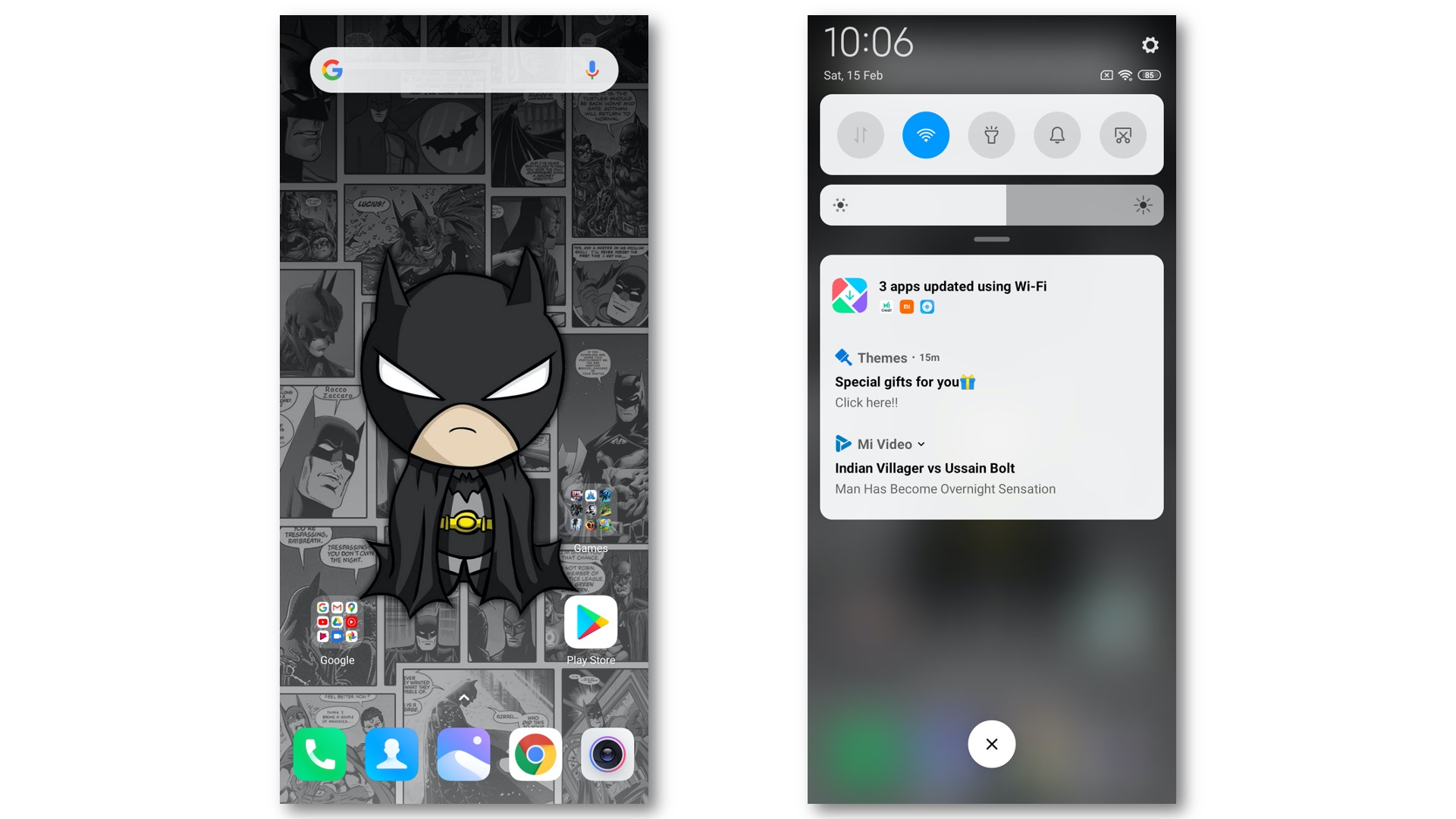
The X2 runs on MIUI 11 which is based on Android 10.0 with Poco Launcher as the default interface. MIUI 11 for Poco is minimalistic, has an app drawer and a system-wide dark mode. But the best part about it is that there are no advertisements in this version that’s specially designed for India. Having said that, default apps like Mi Video and Browser can sometimes behave erratically by bombarding you with push notifications.
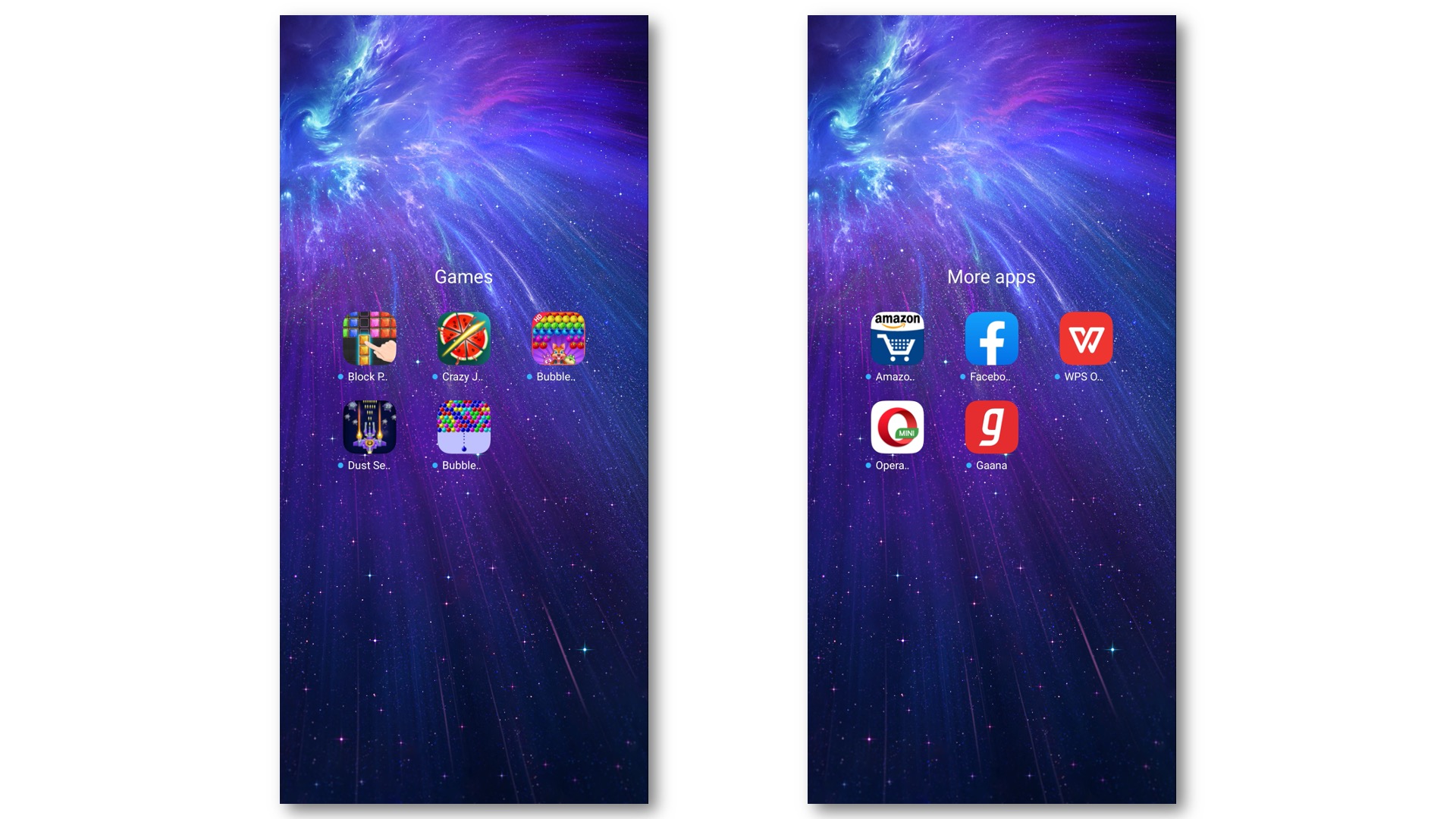
Poco X2 also comes pre-loaded with some apps and games such as Block Puzzle, Crazy Juicer, Dust Settle, WPS office, Opera, Gaana and more. Now, for a large number of folks, bloatware isn’t an issue and these can practically be uninstalled. However, there is just something about pre-loaded apps that doesn’t enhance the overall experience of using the phones, especially if you don’t use those pre-loaded apps.
Being a mid-range phone, the Poco X2 blazed past everything we threw at it, including a bunch of popular games such as Call of Duty, PUBG Mobile and Asphalt 9, to name a few. Though we are still bummed about the unavailability of 120fps high-refresh-rate games for this phone and that remains an existential question for it.
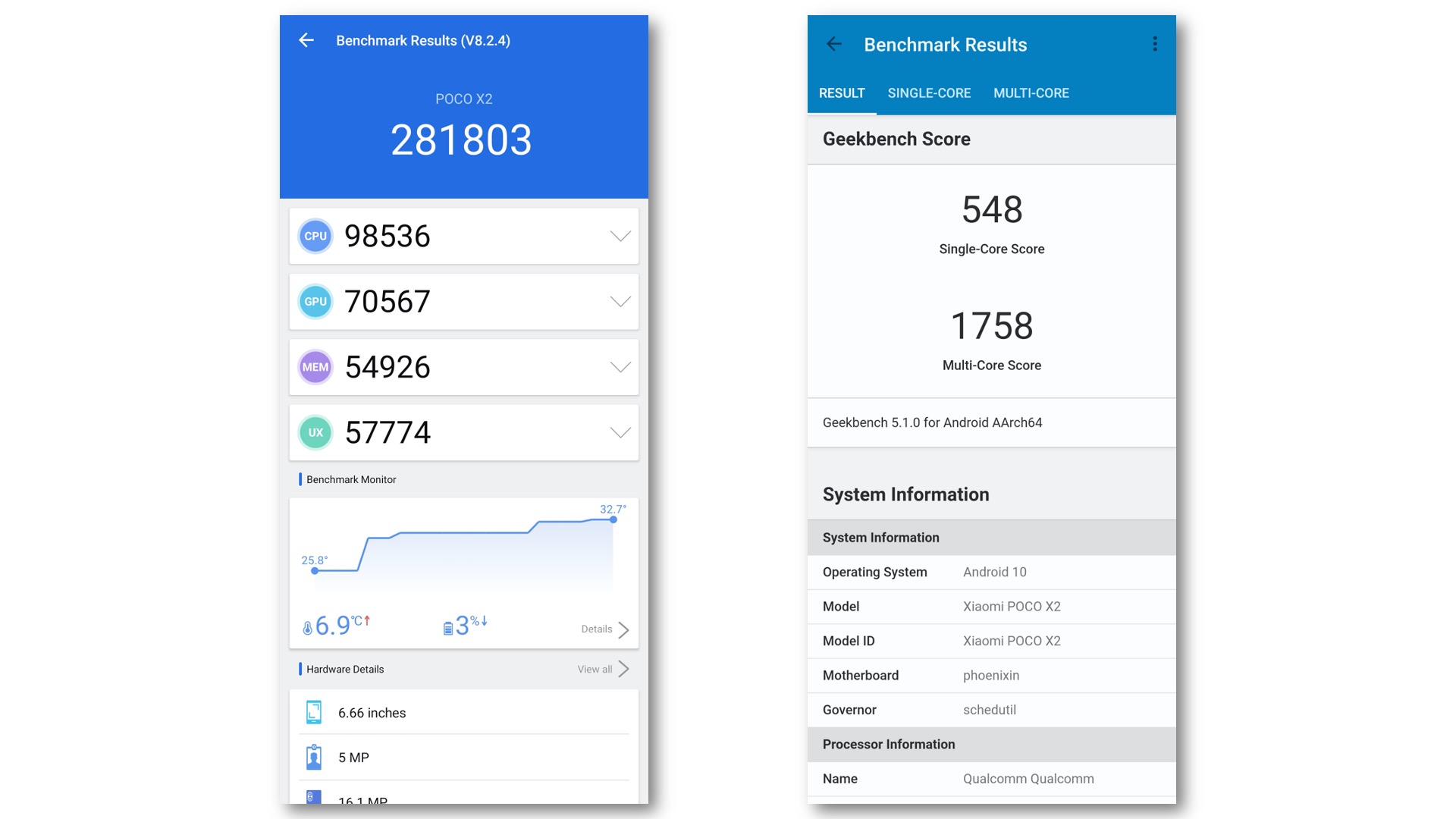
We ran AnTuTu benchmark on the Poco X2 and it received a score of 281803 which is pretty decent. On Geekbench, the phone was awarded a single-core score of 548 and 1758 multi-core score, which again is good for a mid-range phone.
As for the audio, the X2 features super linear speakers with high-res Qualcomm Aqstic WCD937x codecs tuned by Golden Ears audio experts. The X2 also doesn’t miss out on the 3.5mm jack that’s been disappearing from the latest phones.
The battery capacity is rated at 4,500mAh with support for 27W fast charging and Poco claims the fast-charged provided in-the-box can refuel the phone fully in 68 minutes. In our use, the phone topped up from 0% to 100% in just about an hour and can go on for a full day easily if your use case consists of playing games, browsing, scrolling through feeds, YouTube viewing and playing around with cameras. You can also expect a better battery life if the refresh rate is brought down to 60fps instead of 120fps.
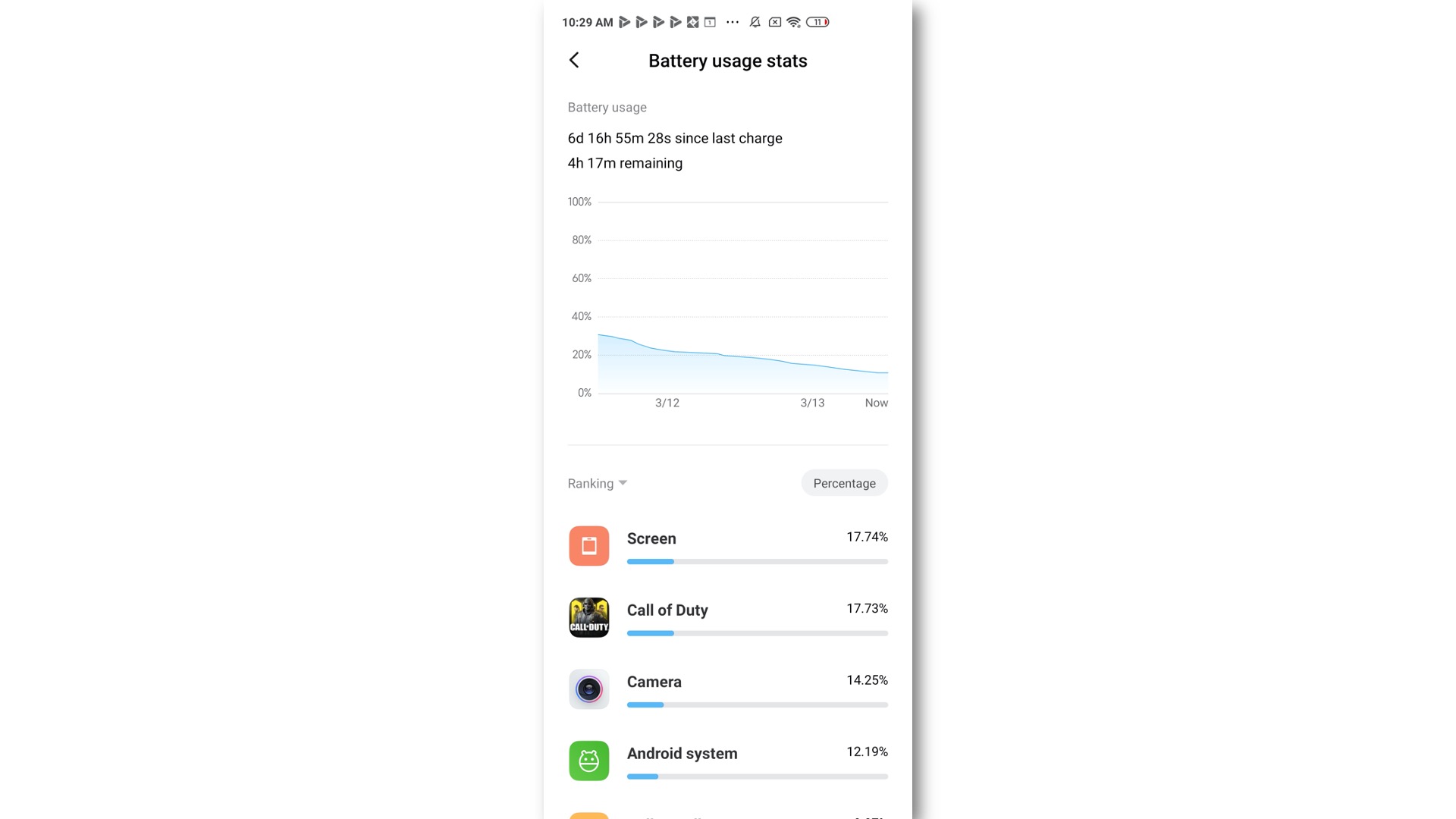
With minimal use, the Poco X2 was able to last for more than 6 days on a single charge and that only proves how efficient it is in managing the power while fine-tuning performance.
Verdict
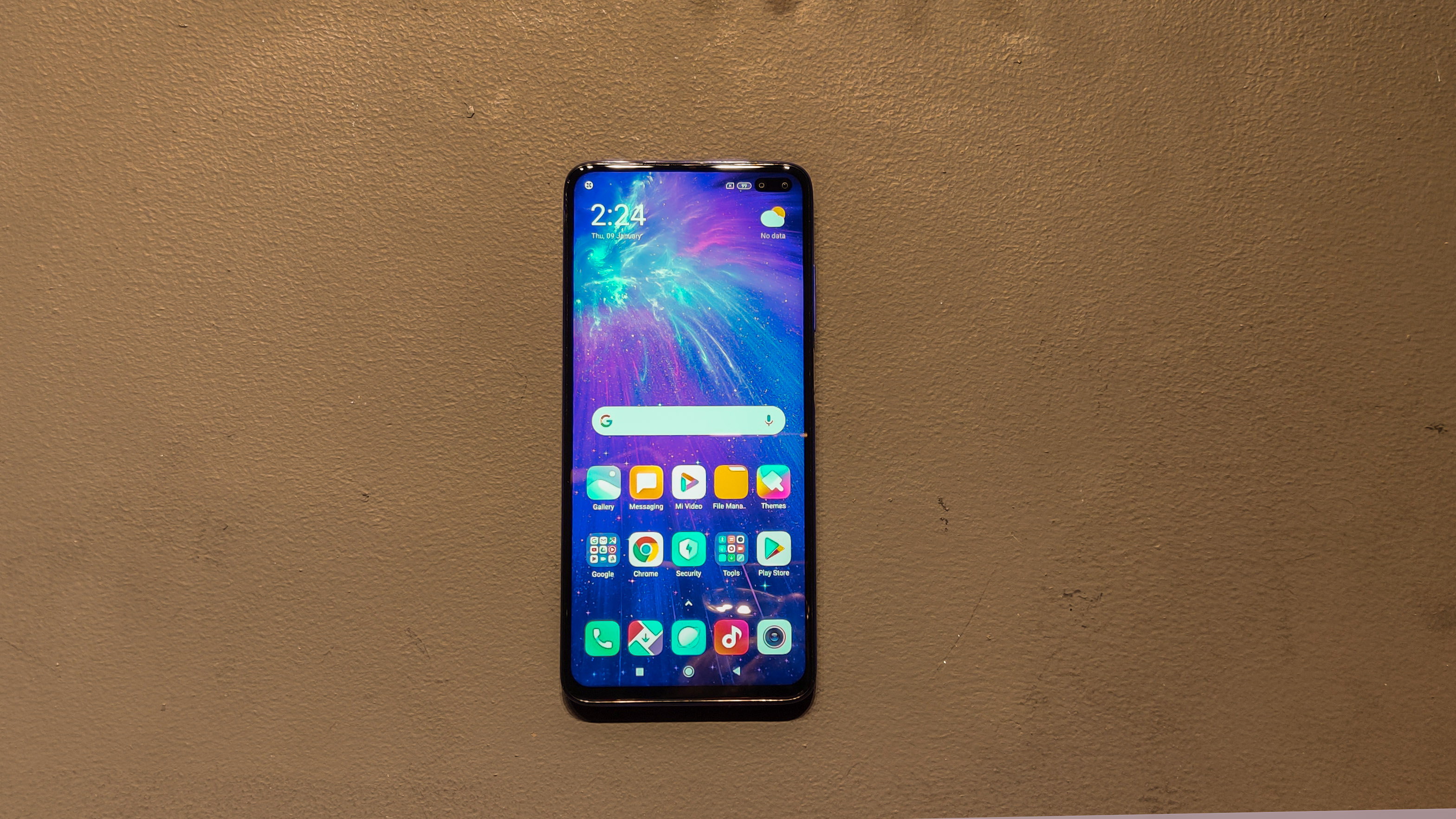
Poco X2 is a value-for-money offering with a high refresh rate screen, powerful chipset tuned for gaming, a versatile quad-camera array and fast charging support. Leaving aside the fact that it’s a rebranded Redmi K30, the Poco X2 poses an immediate threat to the likes of Realme X2 as it is more affordable
The company has nailed the pricing in our opinion and it’s an overall solid phone to have. Having said that, if you’re looking for something groundbreaking and in-line with the stature of Poco F1, the X2 isn’t that phone. It works well, has an appealing price tag that more than justifies the compromises, however, it doesn’t take Poco forward and only ensures its survival. At best, look at the Poco X2 as a buffed-up Qualcomm version of the Redmi Note 8 Pro.
We’re still miffed about certain things such as an unoriginal design, something which was at the front foot of the Poco F1. We’d have loved to see Poco make a comeback with a phone that has an original design.
- Also Read: Realme X2 review
- Siddharth Chauhan is the Consumer Technology Reporter at Digit India. He used to work as an Assistant Editor at TechRadar India
